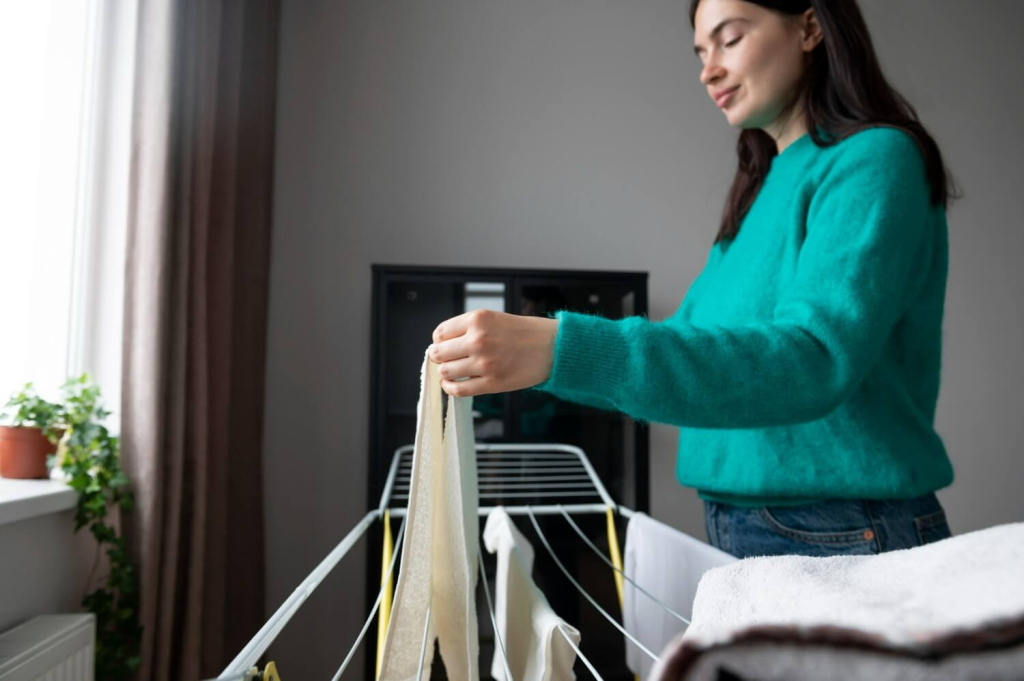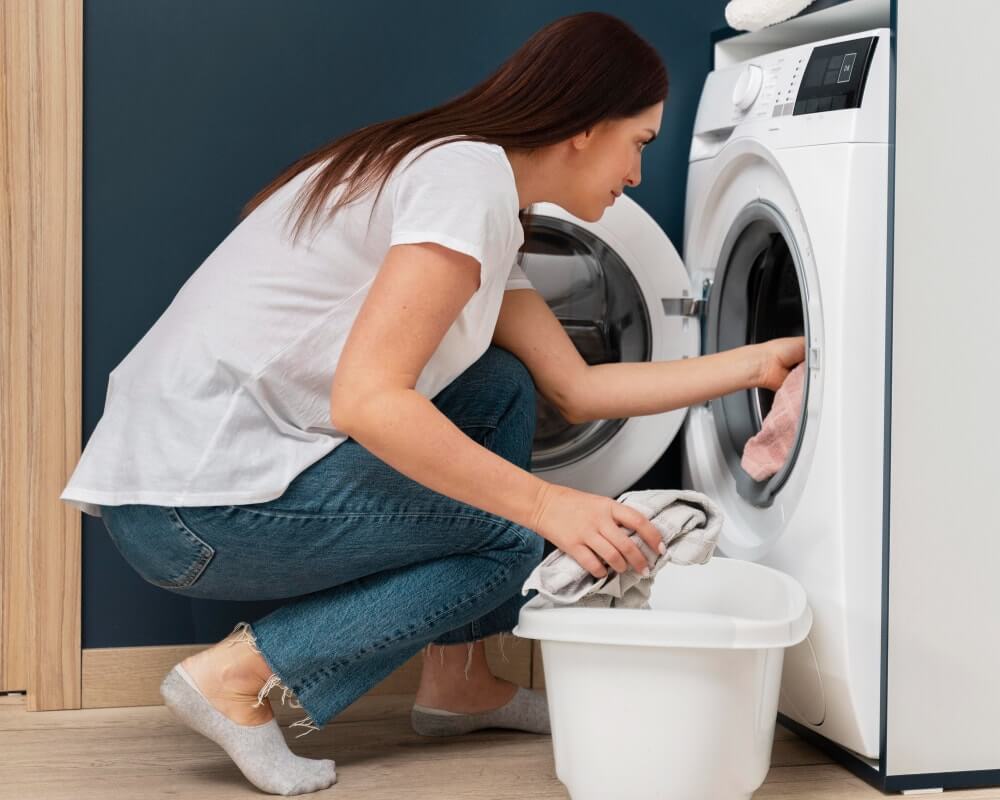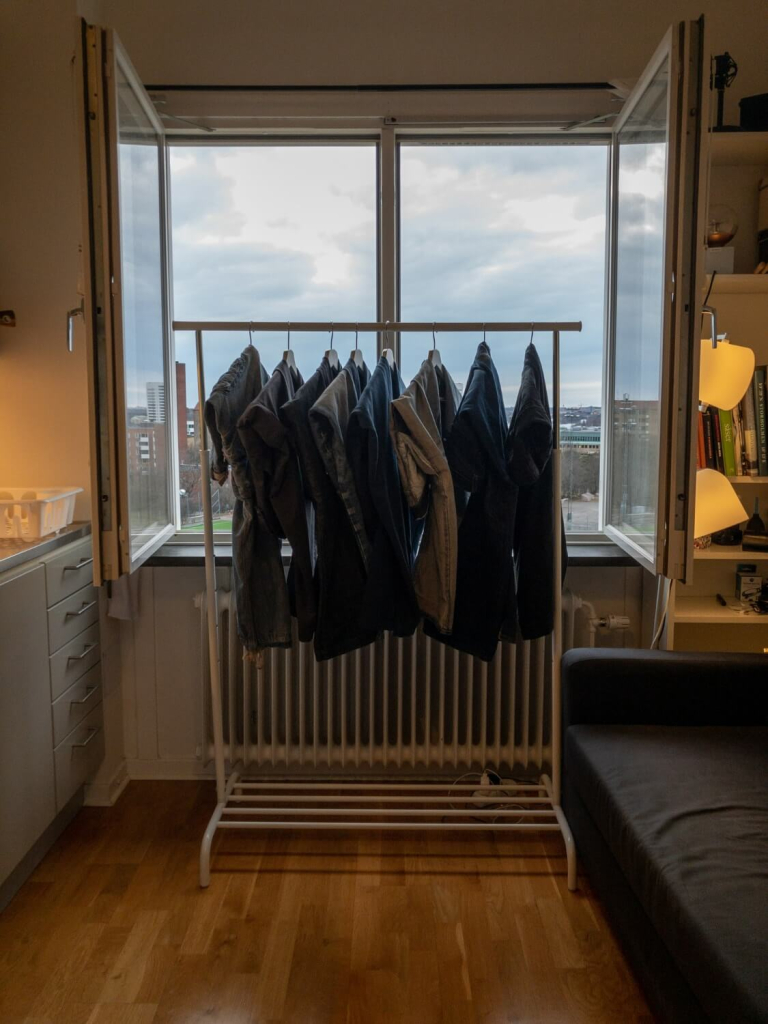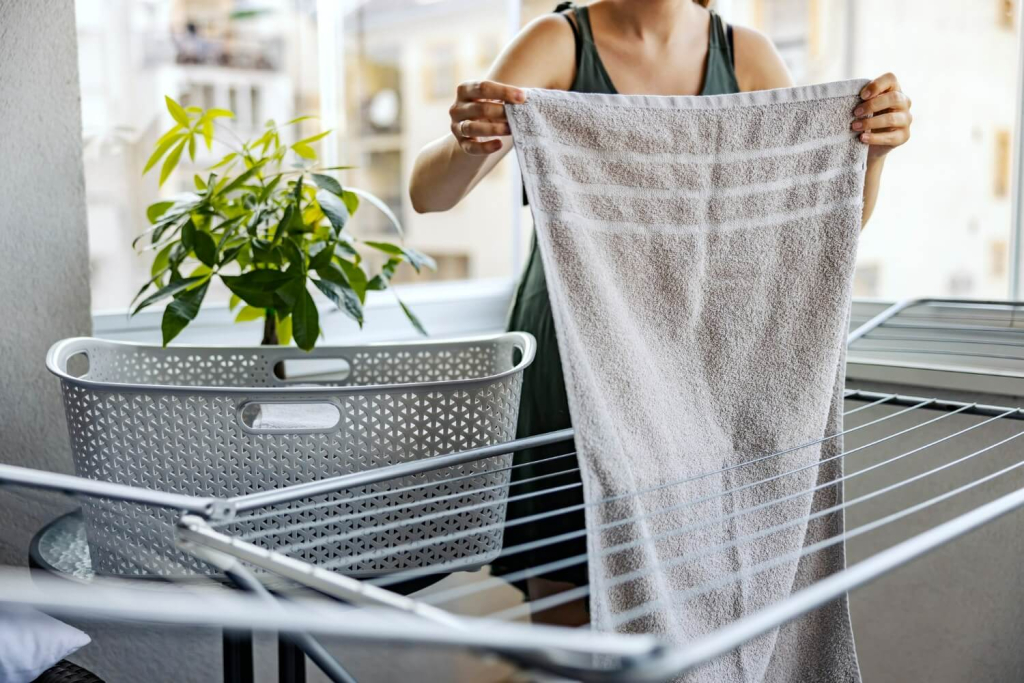
When the rainy season rolls into the Philippines, it’s not only the roads and skies that get wet—laundry piles up too.
On average, the country receives about 2,000 to 3,000 millimeters of rain annually, especially from June to November. During the rainy season, the temperature also gets a bit colder, posing a challenge to washing clothes.
Yet, mastering rainy day laundry can make all the difference between damp clothes that smell musty and fresh, clean garments ready to wear.
9 Rainy Day Laundry Tips:
Doing laundry correctly is about maintaining energy efficiency, fabric quality, and your family’s health.
During wet weather, moisture and bacteria can thrive on improperly dried clothes, leading to mildew, mold, or that dreaded musty smell. Fortunately, there are many smart ways to keep your laundry washing efficient, even when the sun refuses to shine.
Here’s how you can wash, dry, and store your clothes properly so your laundry stays clean and crisp despite the rainy days.

1. Start With the Right Washing Process
A good laundry routine begins with your washing machine. Whether you’re washing clothes in small batches or big batches, always make sure your machine is not overloaded. Overfilling prevents the spin cycle from removing as much water as possible from the garments, causing your washing machine to work harder and resulting in longer drying times.
Check your wash programs. Many modern washing machines have settings that optimize energy efficiency and spin speed for quicker drying. For rainy season laundry, select a high spin cycle to remove excess moisture effectively. The drier your clothes are after washing, the less time you’ll need to hang your clothes to dry.
Another tip: use quality fabric conditioner. It not only leaves a pleasant smell but also helps prevent clothes from developing unpleasant odors while they hang indoors.
2. Wash Small Batches so Clothes Dry Faster
During rainy days, go for small loads of clothes instead of washing clothes in big batches.
Smaller loads allow your washing machine to clean more thoroughly and spin out more moisture. This way, your clothes dry faster, and you avoid piling up clothes that take forever to dry.
It also helps to separate heavier items like jeans and towels from lighter fabrics such as shirts and underwear. Since heavier items retain more water, they need to be spread out more and have air circulation to dry properly.

3. Create the Ideal Setup for Drying Clothes Indoors
When it’s too wet outside, drying your washing indoors becomes your only option during the rainy season.
Choose a room with enough space and good airflow. Don’t hang clothes in cramped corners or near walls where moisture can accumulate and cause mould or mildew.
To circulate air, position pedestal fans or air conditioners strategically to speed up the drying process. A dehumidifier can also help by lowering humidity levels, making the air more capable of absorbing moisture from your clothes.
If you have access to heated airers or tumble dryers, use them wisely. While tumble dryers are convenient, they consume more energy. Consider using them only for heavier fabrics that are difficult to air dry. Meanwhile, heated airers can dry clothes faster with lower energy usage and less wear and tear on your garments.
4. Use Natural Airflow to Your Advantage
Even when it’s raining, you can still make use of natural airflow around your house. Hang clothes indoors near open windows or under covered balconies where air still moves freely. Just make sure the rain can’t reach your clothes.
You can even help natural air circulate more with an electric fan.
Avoid piling damp clothes on top of each other. Instead, spread them out evenly on drying racks, giving air space enough to circulate. This ensures a quicker drying time and helps prevent unpleasant odors.

5. Avoid Fire Hazards While Drying Indoors
One important safety reminder when drying clothes indoors is to never place them directly over heaters or open flames. Not only is this a fire hazard, but it can also damage fabrics.
Similarly, avoid putting wet clothes too close to air conditioners or fans with exposed wiring. Keep your house safe by ensuring your drying space is clear of electrical hazards.
6. Keep the Room Fresh and Odor-Free
Since the rainy season means excess moisture in the air, odors can quickly form if your clothes or room doesn’t get proper ventilation. To keep your clothes fresh, try these laundry tips:
- Wipe surfaces to prevent mold buildup.
- Use air fresheners or natural scents like baking soda or vinegar to neutralize odors.
- Regularly clean your washing machine—leaving clothes inside for too long after a wash cycle can cause a musty smell.
- If you have a dehumidifier, run it for a few hours daily in your drying room to reduce moisture. Your clothes dry faster, and this will also prevent clothing and furniture from smelling damp.

7. Handle the Ironing and Storage Properly
After your drying process, check if your clothes are fully dry before ironing or storing them. Hanging up damp clothes in the closet can cause mildew and mould to grow, damaging your fabrics.
If the weather remains wet and your clothes still feel slightly damp, give them a quick press with a warm iron to remove remaining moisture. This also enhances that fresh and pleasant smell we all want from newly washed laundry.
Once dry, store your clothes properly in areas with good air circulation. Avoid piling them too tightly together so air can flow and prevent clothes from smelling stale.
8. Take Advantage of Modern Laundry Services
When the rainy season just won’t let up, consider using professional laundry services.
They have machines with powerful spin cycles, tumble dryers, and temperature-controlled drying rooms designed to handle constant rain.
Using these services occasionally can give you a break while ensuring your clothes stay clean, fresh, and dry.

9. Choose Homes Built for Any Weather
Finally, these laundry tips work best in a house designed for wet weather. Proper ventilation, smart layout, and enough space for drying washing indoors make a world of difference. That’s why Camella, one of the country’s top housing developers, builds homes ready for the rainy season.
Camella communities are designed with well-ventilated rooms and spaces that allow you to wash clothes safely and comfortably, even indoors. Whether you’re using a pedestal fan, dehumidifier, or heated clothes airer, Camella homes let you do your laundry efficiently.
So, the next time constant rain threatens your laundry routine, remember: with the right washing process, proper drying setup, and a home built to handle wet weather, keeping your clothes fresh and clean can be stress-free.
Rain or shine, Camella makes everyday living, laundry included, comfortable, efficient, and ready for anything.

Celebrate Life’s Milestones in Camella!
Make unforgettable memories in a Camella home.
Our communities are designed to elevate your living experience.

